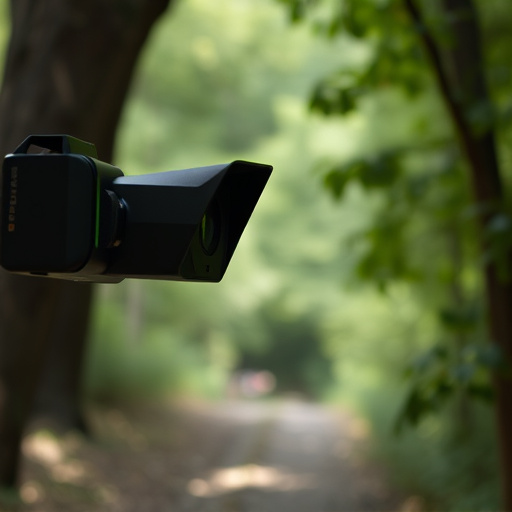Mini spy cameras, with advanced optical sensors and infrared lighting, offer sharp nighttime recording. Their compact size allows easy placement for security or personal use. These sensors detect subtle movements and changes in light, providing clear footage even in low-light conditions. For optimal results, select high-resolution cameras with adjustable sensitivity settings, consider environmental factors, and calibrate sensors regularly. Strategic placement, lens cleaning, and legal compliance ensure effective nighttime recording while maintaining privacy and accuracy.
Uncover the secrets hidden in the dark with the power of optical sensor technology and advanced detection methods. This comprehensive guide explores the intricate world of mini spy cameras, their remarkable capabilities in nighttime recording, and the professional techniques behind optimal sensor detection. From understanding the latest camera technologies to mastering technical considerations, we delve into best practices for successful implementation. Discover how these methods revolutionize surveillance, ensuring every detail is captured, even under low-light conditions.
- Understanding Mini Spy Cameras and Their Capabilities
- The Role of Optical Sensors in Nighttime Recording
- Advanced Methods for Optimal Sensor Detection
- Technical Considerations for Effective Sweep Operations
- Best Practices for Professional Implementation
Understanding Mini Spy Cameras and Their Capabilities
Mini Spy Cameras, as the name suggests, are compact and discreet devices designed to capture images or video in a covert manner. These tiny cameras pack an impressive punch when it comes to their capabilities. With advanced optical sensor technology, they can deliver sharp and clear footage, even in low-light conditions, making them ideal for nighttime recording. The sensitivity of their sensors allows them to pick up on subtle movements and changes in light, ensuring no detail goes unnoticed.
Their compact size enables easy placement in various locations, from hidden corners of a room to discreetly attached to objects or people. This makes Mini Spy Cameras popular choices for security, surveillance, and even personal use. The devices often come equipped with infrared (IR) lighting, which enhances their performance during the night, allowing for continuous and high-quality nighttime recording without compromising on privacy or discretion.
The Role of Optical Sensors in Nighttime Recording
Optical sensors play a pivotal role in enhancing nighttime recording capabilities, especially with the use of mini spy cameras. These sensors are designed to capture clear and detailed images even in low-light conditions, making them indispensable tools for various applications. By leveraging advanced optical technology, they can detect and amplify ambient light, allowing cameras to produce high-quality footage that reveals what’s hidden in darkness.
Mini spy cameras, equipped with sensitive optical sensors, offer discreet and effective surveillance solutions. Their ability to capture sharp visuals during nighttime recording is a game-changer for security systems, wildlife monitoring, and even home automation. With these sensors, users can navigate through the hustle and bustle of night without sacrificing clarity or detail, ensuring that every sight and sound is recorded with precision.
Advanced Methods for Optimal Sensor Detection
In the realm of optical sensor detection, advanced methods have emerged to enhance precision and capabilities, particularly for miniature spy cameras designed for nighttime recording. These innovative techniques leverage cutting-edge technologies to improve sensitivity, resolution, and overall performance in low-light conditions. One such method involves the integration of high-sensitivity sensors that can capture even minute light signals, ensuring clearer images during nocturnal operations.
Additionally, advanced signal processing algorithms play a pivotal role in enhancing picture quality and reducing noise. By meticulously analyzing data from mini spy cameras, these algorithms can reconstruct detailed visuals, making it easier to identify subjects and gather intelligence. This, coupled with the use of infrared technology for nighttime recording, allows operators to capture covert footage effectively, ensuring optimal sensor detection even in the darkest environments.
Technical Considerations for Effective Sweep Operations
When conducting optical sensor detection sweeps using mini spy cameras for nighttime recording, technical considerations play a pivotal role in ensuring effective operations. The first step involves selecting the right equipment; high-resolution miniature cameras capable of low-light imaging are essential. These devices should offer adjustable sensitivity settings to capture clear images without sacrificing battery life.
Additionally, understanding the environment is crucial. Operators must account for factors like lighting conditions, obstructions, and potential interference from neighboring devices. Utilizing infrared technology can aid in overcoming nighttime challenges, enabling unobstructed visualization. Regular calibration and maintenance of sensors are also vital to guarantee accurate data collection throughout the sweep process.
Best Practices for Professional Implementation
When implementing optical sensor detection with mini spy cameras for nighttime recording, professionals should adhere to best practices to ensure optimal performance and avoid legal pitfalls. One key practice is to strategically place the cameras in areas that offer clear lines of sight, avoiding obstructions like trees or buildings that could block their view. Additionally, using infrared (IR) technology enhances visibility in low-light conditions, making it ideal for nighttime recordings.
Regular maintenance is another crucial aspect. Keeping the lenses clean and free from debris ensures crisp images. Calibrating the sensors periodically also helps maintain accuracy. Furthermore, adhering to local laws and regulations regarding surveillance is essential; obtaining necessary permits before deployment can prevent legal issues. This includes understanding privacy laws and ensuring that recordings are stored securely and access is restricted to authorized personnel only.
In conclusion, the integration of optical sensors and advanced detection methods has significantly enhanced the capabilities of mini spy cameras in nighttime recording. By understanding these technologies and adhering to best practices for professional implementation, users can maximize the effectiveness of their surveillance operations. The insights provided in this article offer a comprehensive guide for leveraging optical sensor detection sweeps, ensuring optimal results in various applications that demand discreet and efficient monitoring during darkness.
